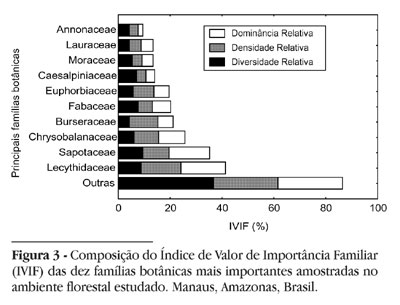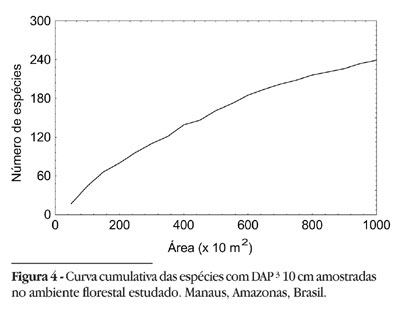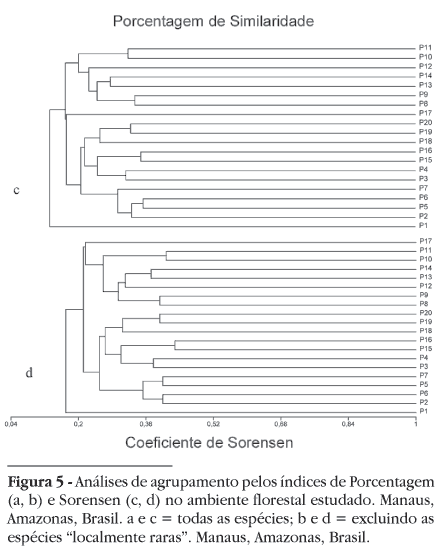The floristic and phytosociological study of trees, palms and lianas with diameter at breast height (DBH) >10 cm in a forest slope in Central Amazonia (2º35'45 "S and 60º12'40" W) was carried out using 20 plots of 50 x 10 m, distributed in two parallel transects of 500 x 10 m. A total of 771 plants were registered, belonging to 50 families, 120 genera and 239 species. Of the sampled species, 44% are locally rare. Families with the most species and number of individuals were Sapotaceae, Lecythidaceae, Fabaceae, Caesalpiniaceae and Chrysobalanaceae. More than 65% of the sampled plants had DBH > 20 cm. Eschweilera bracteosa and Protium apiculatum were the most important in terms of IVI. Almost 83% of the species were randomly distributed in the sampled hectare. The Shannon-Wiener diversity index (5.01 nats.individual-1) and eveness (0.91) were high when compared to similar surveys in the same region. The edaphic and topographic heterogeneity, recruitment rates of new individuals and locally rare species at the community level, may have contributed to the high dissimilarity (36.2%) and floristic diversity registered in this study.
phytosociology; diversity; upland; Central Amazonia









